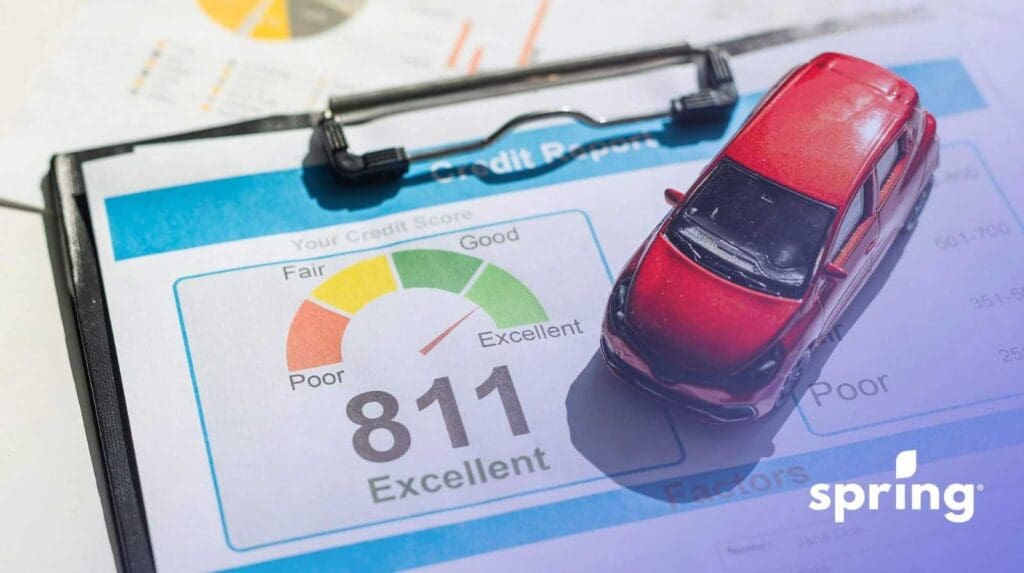Among the great dilemmas of modern-day Canadian life – finding the closest Tim Hortons, choosing which American NHL team to cheer for during the Stanley Cup finals, etc. – is deciding between TFSAs or RRSPs as the best savings vehicle for your money.
The good news is that you’re saving money and bucking a worrisome trend of Canadians saving less and less. The benefits of saving money can’t be overstated: savings can cushion you against life’s financial shocks, provide for your retirement years, and bring you closer to your major economic goals.
While it’s advisable to have both an RRSP and TFSA, there are often only so many free dollars to spread around each pay period. If you’re in the position to choose one or the other, we’re going to help the decision by breaking down the difference between an RRSP and a TFSA, including the benefits of each, the contribution limits, which is right for you and much more.
What is the difference between RRSP and TFSA?
When comparing TFSAs (Tax-Free Savings Accounts) and RRSPs (Registered Retirement Savings Plan) people like to say the latter is like the greying dad, while the former is the trendy youngster getting all the attention. Introduced in 2009, TFSAs quickly built up a loyal following as a flexible option to save – for anything, not just for retirement. TFSAs are younger, flexible and living for today if you will.
RRSPs, on the other hand, have been around since the late 1950s and were designed specifically for the purpose of building a nest egg for those golden years. They are long-term savings vehicle not intended for near-term savings goals like a car, vacations, or real estate. Withdrawals from an RRSP trigger taxes to discourage you from removing your money before retirement age, as opposed to a TFSA where withdrawals trigger zero tax.
Tax advantage: TFSA vs. RRSP
You may have noticed the term “RRSP deadline” thrown around when visiting your bank around tax season. That’s because RRSPs can factor heavily in your yearly tax returns. RRSP deposits are deducted from your taxable income, which brings your taxable income down and can either be a boon on your tax return or lighten the burden of a tax bill. This is an area where RRSPs have a clear advantage over TFSAs, as a TFSA contribution, which is your after-tax income, does not earn any tax refund.
This TFSA vs RRSP comparison chart will help you differentiate the two options.
| Quick Comparison | RRSP | TFSA |
| Tax-free withdrawal | No | Yes |
| Tax refund benefits | Yes | No |
| Contribution limit | Yes | Yes |
| Age limit | Yes | No |
Withdrawal options for TFSAs vs RRSPs
Withdrawals from RRSPs vs TFSAs are a completely different beast when it comes to taxes. The enduring popularity of TFSAs is largely due to its ability to allow savers to withdraw money anytime without a tax penalty. What’s inside the account is considered after-tax income, thus not subject to further tax.
For an RRSP, considered pre-tax income, withdraws are subject to a percentage to be paid immediately to the managing institution, such as a bank or fund manager, while the amount you withdraw counts as taxable income the year it’s taken out. That’s a double whammy. This structure is to encourage you to hold off withdraws until your retirement when your income is much lower. At 71, you must withdraw all cash from your RRSP or have it transferred to a Registered Retirement Income Fund.
There are only two ways to avoid those taxation triggers on RRSP withdrawals – the Home Buyer’s Plan (HBP) and the Lifelong Learning Plan (LLP). The HBP is a federal program that allows withdrawals up to $60,000 in a calendar year from your RRSP to buy or build a home. In theory, this will help first-time homebuyers get into the increasingly expensive Canadian real estate market. Keep in mind: all withdrawals using the HBP must be paid back anytime within 15 years.
The LLP allows you to withdraw from your RRSP to finance full-time training or education for yourself, your spouse, or your common-law partner. This also has to be repaid in due course.
Contributing to a TFSA
Because the government doesn’t want you socking away all your money tax-free, there is a yearly contribution limit for TFSAs. The limit amounts have been somewhat of a roller coaster over the years, depending on government objectives. While this is more than just a simple savings account, it’s a great way to save money and build up your emergency fund. You save more tax with this account because interest income earned is tax-free, which some people see as free money. Plus you can pull money at any time.
The TFSA was introduced in 2009 with a $5,000 yearly limit but then bumped up for inflation in 2013-14 to $5,500. The limit was doubled in 2015 – an election year, keep in mind – to $10,000 but restored back to $5,500 when the current government was elected. In 2019, it was raised to $6,000 and has been held there. As of 2023, though, it went up to $6,500. The cumulative total – the most you can have deposited in a TFSA – has been going up though the years and was $81,500 as of 2022. In 2023, the limit rose to $88,000 and now in 2024, it’ was $95,000 after a $7,000 increase.
Important reminder: The unused contribution room from previous years is carried over. So that means you could deposit the full $88,000 in 2023 (or $95,000 if you wait until 2024) if you’ve never contributed in prior years. If you’re unsure what your contribution limit might be, check with Canada Revenue Agency (CRA).
Contributing to an RRSP
RRSP contributions are less of a one-size-fits-all approach compared to TFSAs. RRSP contribution limits are calculated by your last reported earned income – up to a set maximum. For example, your yearly RRSP contribution limit is either the set max of $2,210 (for the 2022 tax year) or 18% of your reported income, whichever is lower. This information is made available to you by the CRA under My Account.
Like TFSAs, these contribution limits carryover through the years and accumulate if left unused. You have 60 days from the start of the tax year to contribute to an RRSP and claim the deduction on your prior year’s taxes.
For example, if your tax rate is 35%, every $100 you invest in an RRSP will save you $35 in tax savings, up to your contribution limit. Hence, RRSPs are such an important tool during tax season. Putting money in to maximize your annual limit can mean a sizable deduction on taxes paid and could mean a hefty tax return, depending on your income level.
Remember: RRSP is for pre-tax dollars,and TFSA is for after-tax dollars.
Investment options for TFSAs vs RRSPs
While both the TFSA and RRSP are savings vehicles at their core, both can be used within other investment structures. If you’re just starting to explore the basics of TFSAs and RRSPs, it may seem a little advanced to discuss equities, ETFs, mutual funds, GICs and bonds.
Just know that both RRSPs and TFSAs offer several types of investment accounts with different levels of risk and return. Many employers offer Group RRSP options where your money is pooled with other employees in a mutual fund. Perhaps your employer matches some or all of your contributions? It’s not uncommon.
RRSP vs TFSA – which is right for you?
As you may have gathered by now there’s no simple answer to the question of TFSA vs RRSP because it depends on varying factors like age and your income level now versus what you expect to be earning near retirement.
The general consensus is that if you’re young and have a lower income level, then a TFSA makes the most sense because you’re not looking for ways to reduce your taxable income. TFSAs offer a vehicle for long and near-term savings goals with the flexibility to pull your money when you need it. If you’re thinking about buying a new car, saving for a down payment or taking a really excellent vacation, then a TFSA makes all kinds of sense.
On the flip side, for those hitting their peak earning years and already juggling multiple financial obligations, then an RRSP is probably the best choice. Not only will it give you significant tax benefits, but it will also help you sock away needed retirement savings at a time when you have multiple financial obligations. When the time comes to pay tax on an RRSP withdrawal, you should be hitting those senior citizen years with a small, less-taxable income. That’s when an RRSP can help put you in a good financial situation.
Pro tip: The ideal scenario is to contribute to both TFSA and RRSP accounts. If you have those dollars to spread, consider making the maximum RRSP contribution each year and allocating that tax refund to your TFSA. Now you’re getting the best of both worlds.
Best Savings Accounts in Canada for Starting a TFSA or an RRSP
Now that you’re loaded with information about TFSAs vs RRSPs and which savings vehicle is right for you, it’s time to hit the market. If you bank with the Big 5 – CIBC, BMO, RBC, TD and Scotiabank – then starting RRSP and TFSA accounts will be no problem because they all offer both, plus it will be convenient when transferring funds from your pre-existing account. Recently, online brokerages like Wealthsimple and Questrade have been growing in popularity.
The savvy investor, however, will shop around for the best interest rate and get the most return for their money. The smaller the bank or credit union, the better the rate usually. Websites like ratehub give you a comprehensive comparison of rates and promotional rates across various Canadian financial institutions.
Just getting started with RRSPs? Check out our RRSP tips for beginners!
How RRSPs and TFSAs Affect Government Pensions
Whether you have an RRSP or a TFSA will affect your income when it comes to government pensions. These pensions include Old Age Security, Canada Pension Plan and the Guaranteed Income Supplement. With a TFSA, any withdrawals you make aren’t included as part of your taxable income, so they won’t affect your pensions or your ability to qualify for the Guaranteed Income Supplement.
RRSPs, on the other hand, do affect your annual taxable income. This means that your withdrawals will affect how much income tax you pay, as well as your government pension amounts. They can even be the difference between qualifying for GIS or not. That said, you can choose how much you want to withdraw per year as long as you meet the minimum amounts.
How RRSPs and TFSAs Affect Employment Pensions
Employment pensions are less affected by other types of retirement income. That said, since TFSAs don’t affect your annual income, you can take out as much as you want at any time and not be affected. RRSP amounts, on the other hand, do affect your annual income. While this won’t affect pension amounts at all, it can take you out of a lower tax bracket and put you into a higher tax bracket.
Limits on How Many RRSPs and TFSAs You Can Have
In Canada, there’s actually no limit on how many RRSPs and TFSAs you can have however, you do have to keep track of your total contribution room. Between your multiple accounts, it’s important to make sure that you stick to the limits to avoid any tax implications and withholding tax.
Different Types of RRSPs In Canada
When looking at RRSPs in Canada, it’s important to consider that there is more than one type of Registered Retirements Savings Plan. Each of these registered accounts counts as part of your annual maximum limit, so you can pay less tax. Here’s how they work.
Group RRSPs
Group RRSPs are a type of RRSP that’s created by your employer and includes both employee and employer contributions. Just like traditional RRSPs, group RRSPs are registered with the federal government, and all of your contributions are still considered a tax deduction. This means that you don’t pay capital gains on any of your investment earnings in this account either.
Withdrawal rules for group RRSPs are different from traditional RRSPs. Usually, employees have a limit on the amount they can withdraw without speaking to the company. If you want to withdraw funds in large amounts, you do have to arrange it with your employer if they allow it. Even if you have an individual RRSP, you cans till use a group RRSP to help you earn a high income during retirement.
Spousal RRSPs
With spousal RRSPs you’re able to contribute to your spouse or common-law partner’s retirement income while still gaining tax incentives. The idea behind these is to allow couples to split their income and gain a tax break with the Canada Revenue Agency. It’s also a great way to save other income for retirement.









